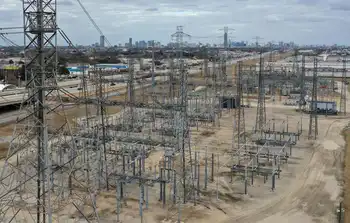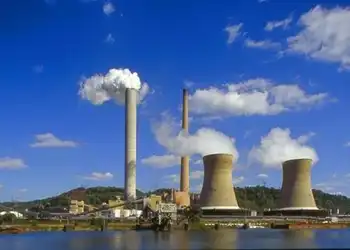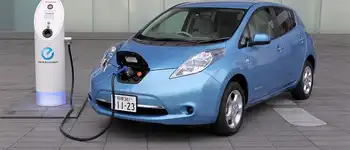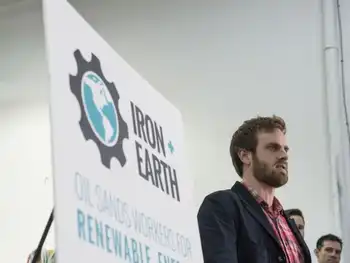The future is clean
By Montreal Gazette
Protective Relay Training - Basic
Our customized live online or in‑person group training can be delivered to your staff at your location.

- Live Online
- 12 hours Instructor-led
- Group Training Available
It's audacious, not because of a cleantech vacuum - Quebec boasts myriad companies involved in cleantech, nearly 1,000, according to Écotech Québec, the newborn industry association - but because it's a latecomer into what might be the biggest play of the next decade.
"We need to be fast, concrete, hard-hitting," said Denis Leclerc, the president and chief executive of Écotech Québec, which still does not have an office or a plan of action.
"This industry is moving fast, there are lots of breakthroughs; 2010 will be the cleantech decade."
But for Quebec to catch up to other world-class clusters, such as those found in Denmark, Germany and California, it will have to address three critical factors, according to entrepreneurs, investors and analysts surveyed by The Gazette: government incentives, private capital, and a complete lack of networking.
Cleantech is a general term for technology used to reduce waste, save energy and harness renewable power. Solar cells, biofuels, water filtration and carbon capture are all forms of cleantech.
If Canada can be considered to have a specialty, it's in green energy production, with regional pockets of expertise based on the available resources. British Columbia, for example, has some activity in tidal power and wind power, with many companies producing components for wind turbine manufacturers.
Alberta, on the other hand, is exploring forms of carbon capture and more efficient ways to extract bitumen from the oilsands.
In the east, Quebec has several firms converting waste to energy and providing services to hydroelectric utilities.
Problem is, Canada is a relative latecomer to the cleantech scene precisely because of the wealth of natural resources that are ripe for exploiting. Countries with far fewer resources, like Germany and Denmark, have for years invested in cleantech and can now boast leadership in solar and wind power.
Even the U.S., the global bogeyman for per-capita pollution, has allocated hefty stimulus funds toward cleantech on top of state-based initiatives, while Canada has earmarked a modest eight per cent of its stimulus package.
"Electricity in Quebec is so cheap," said Jacques L'Écuyer, chief executive of 5N Plus, a St. Laurent company that makes components for solar cells and recycles industrial residues. "This creates a barrier for cleantech startups. They're facing steep competition."
However, the over-reliance on traditional energy is slowly shifting, said Rick Whittaker, vice-president of investment for Sustainable Development Technology Canada (SDTC).
The arm's-length organization puts federal money earmarked for cleantech into companies it deems promising. So far, it has spent $425 million on 171 projects, 34 of them in Quebec.
"People are realizing these resources are finite," Whittaker said. "Industry is driving a lot of these solutions. They want to be competitive globally and they need to drive down operating costs. And being more efficient makes them more environmentally sound."
Indeed, the benefits of cleantech have been argued to the point of irrefutability, nearly neutralizing fears that stewarding the environment entails an economical sacrifice.
The main business argument is efficiency: cleantech helps companies use finite resources to a fuller extent and produce less waste. The result is long-term savings and the inestimable benefit of a green public image.
Jared Diamond, author of Guns, Germs, and Steel, recently argued that mega corporations have the most to gain. Wal-Mart, for example, uses cleantech to make its truck fleet more fuel-efficient and expects to save $200 million U.S. per year on gas.
Oil titan Chevron Corp., he added, is beefing up its environmental practices to prevent costly oil spill cleanups, and to avoid pricey retrofitting as governments gradually raise environmental compliance rules.
But a shift in corporate attitudes is only one ingredient.
The Quebec government has clearly said that cleantech is a priority, and put a number of systems in place to encourage the sector.
There are three types of tax incentives for companies, including the often-cited scientific research and experimental development (SR-ED) tax credit. The province has also promised $282 million over six years for cleantech research.
This is on top of policies to make Quebec a leader in wind power. Two years ago, Hydro-Québec made the largest single solicitation for wind power ever made, seeking to add 2,000 megawatts to its network starting in 2011.
But legislation and compliance rules will also be key.
Premier Jean Charest has promised to cut greenhouse gases by 20 per cent in 10 years from its 1990 levels, double the reduction target for Canada as a whole.
This is expected to increase demand for cleantech among the province's largest polluters, particularly the transport industry, which produces 40 per cent of Quebec's greenhouse gases, Leclerc said.
However, it could be more aggressive, L'Écuyer said. Ontario, for example, introduced feed-in tariffs to encourage investment in clean energy producers. These are long-term contracts at competitive premiums to renewable energy startups, guaranteeing a return on investment.
"It's expensive, but it provides substantial advantages," he said.
The other critical ingredient, private funding, is still embryonic. Only a few venture capital (VC) firms have a specialized focus on cleantech, and the emergence of success stories is still far away. But at least a capital infrastructure is taking form.
The Quebec government, along with the Caisse de dépôt et placement du Québec and the Quebec Federation of Labour's Solidarity Fund created this year Teralys Capital, a fund of funds that will channel $700 million to individual VC firms. One of these is Tandem Expansion Fund, a recently created fund aimed at turning small promising players into global contenders.
"Only now are people sensitized to cleantech and looking at it from a business perspective," said Robert Nardi, leader of the technology, media and telecom group at Deloitte & Touche LLP in Canada. The services giant advises companies on using cleantech to be more efficient and improve their green appeal. "But to actually see results will take some time."
This slowness is a fundamentally Canadian one: VC firms in Canada are not as quick to move in but they are steadfast, argues Whittaker of the SDTC. "We don't go in as early, but we're definitive on what we do."
Whittaker says that 26 per cent of all venture capital money in Canada is now going to cleantech, making it the second-largest investment category after biotech.
But more is always needed, because SDTC's money is running low. Its $350-million fund for climate change and clean air projects is nearly depleted, and another fund for water and soil technologies is expected to end next year.
And for more money to flow in, we have to start seeing successful exits in cleantech, said Massimo Fiore, a stock analyst at Versant Partners who specializes in cleantech.
"They have to move away from being a concept to showing bottom-line results," he said. "The more we see science being translated into results, the more investors will be interested."
Fiore recommends 5N Plus and Boralex, two Quebec firms that "behave like companies that could grow to greater than $1 billion" in market cap.
He has a $7.50 target for 5N Plus and a $14 target for Boralex, which builds renewable energy plants. He doesn't own either stock.
And it's not just money that matters, but experienced money.
"It's not fear of risk but lack of knowledge within the industry as a whole that's the problem," said Vincent Chornet, chief executive of Enerkem. The Montreal-based firm burns municipal waste into synthetic gas, which can then be made into biofuels.
"Cleantech is more industrial, more capital-intensive than, say, software of biotech," he added. "This is a game for very experienced VCs."
What is still completely absent is interaction and networking between cleantech companies, a hallmark feature of any vibrant cluster. This is where Écotech Québec comes in.
Its mission is to "debug" this lack of cross-pollination.
"We have a lot of people, and the challenge is to get them talking and sharing expertise," Leclerc said.
By learning to talk among themselves, the cluster will then know how to speak in one voice and push for cleantech adoption with more authority, he argued.
"Big companies are not adopting cleantech because there's this lack of information, there's no advocacy," he said.
Leclerc's dream is to have Montreal play host to a major international cleantech forum within two years. This, he hopes, will attract foreign investment and skilled managers with experience in growing cleantech firms.
Then Quebec's cleantech sector will flourish among the best of them, he vowed.
"We have the infrastructure, the people, and the knowledge. It seems now that politically, more than ever, we have willingness to push this," he concluded.
"If we really want to develop this sector, it's now or never, because others are also pushing this."











